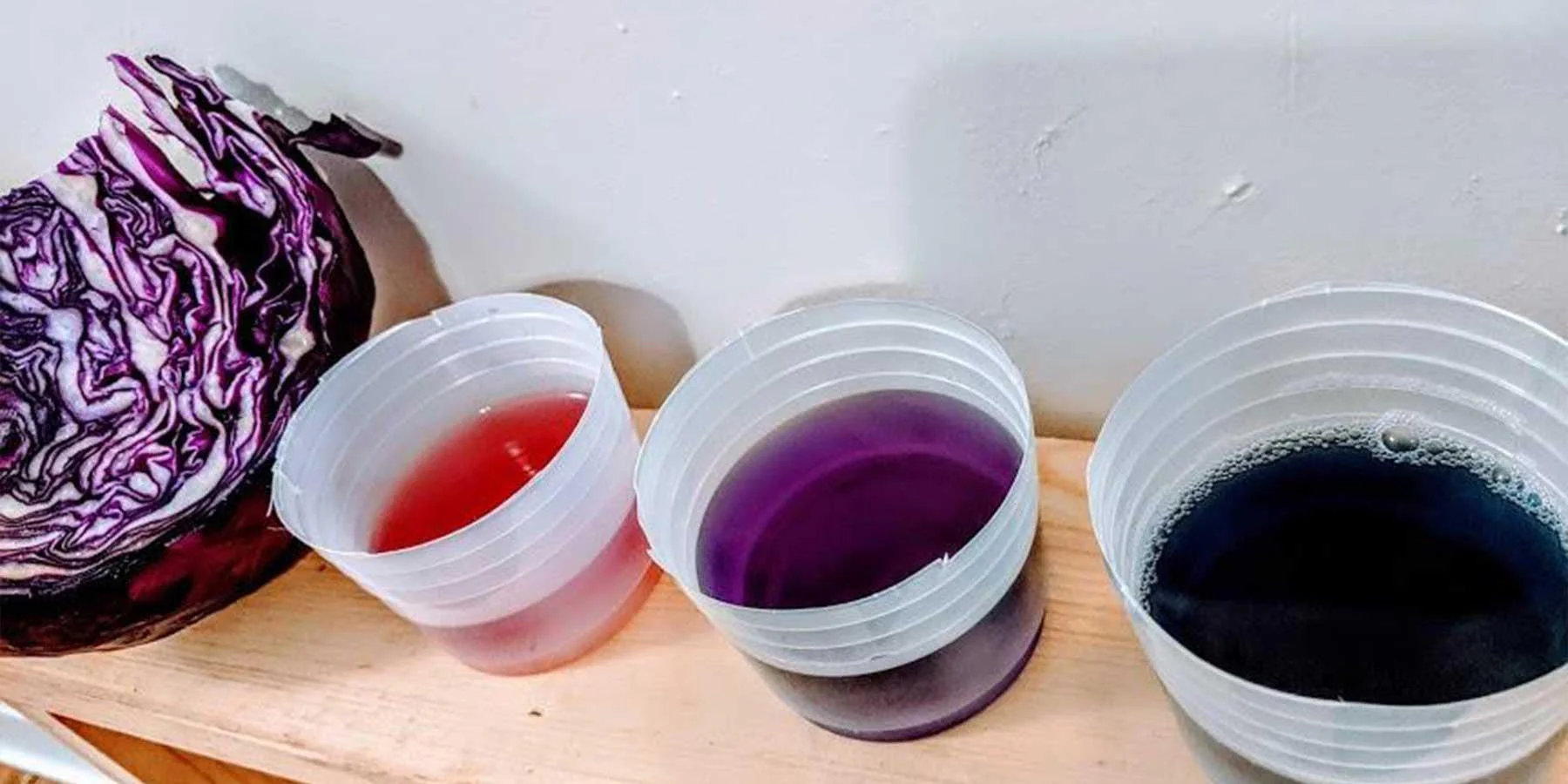Looking for ways to entertain the kids?
Go ahead and make use of these at-home labs. Cheap, simple, and educational alike, these classic experiments are made entirely from things you can find in the kitchen (apart from cabbage... But it’s a 69¢ investment, so we’ll let it slide).
While the educational aspect may be more fitting for kids aged 8 and up, the experiments themselves are so simple a 5 year old could do them!
~-~
Magic Mist – Bernoulli’s Principle

This experiment is such a splash!
Using nothing more than a cup, a straw, and a bit of water, you can make your very own magical mist. Not only does this teach us a little bit about the mysterious world of physics, it also gives us a fun way to sneak up on our friends and family. Nothing says “Surprise!” like a spray of ice cold water, after all!
What you’ll need:
- One straw
- One cup
- Water
Here’s how you do it:
- Cut the straw into equal halves, making two new straws.
- Fill the cup most of the way with water.
- Use your left hand to put one of your straws into the cup. Hold it straight up and down. Keep the opening of the straw above the lip of the cup and out of the water.
- With your right hand, touch the tip of your second straw to the opening of the other. Tilt the second straw until the two of them form a right angle (like the corner of a square!) If you are having trouble with this, just look at the picture above.
- Blow as hard as you can into the second straw.
- Watch the mist fly! (This may take a few tries, but you’ll get there… we promise.)
For extra fun, add a few drops of food coloring and hang up a piece of paper in an adult-approved location (this part can get messy!). Spray the colored water onto the page, creating your own splatter art!
Here’s how it works:
When you blow air through one straw, it causes the pressure above the opening of the second straw to drop. Because the pressure in the cup is much higher than that at the opening of the straw, water rises toward the stream of air. It then gets caught in the stream, causing the water to spray!
This is a simple example of the Bernoulli’s principle, which describes the relationship between water pressure and the speed of flow. It may be a bit complicated, but it's definitely a blast!
~-~
Multicolored Madness – Red Cabbage pH Indicator

Unleash your inner mad scientist with this chaotically chromatic chemistry experiment!
By simply boiling a red cabbage, you can make what is called a “pH Indicator,” to demonstrate how acidic or basic something is. By mixing it with different (parent-approved) liquids around the house, you can create a whole rainbow of colors, learning a bit about chemistry along the way.
What you’ll need:
- One red cabbage
- One orange/lemon/etc.
- Dish soap
- One large stock pot
- Water
- Four clear cups
- Jars with lids to store
Here’s how you do it:
- With the help of an adult, cut your cabbage in half. Place these halves in your stock pot.
- Fill the pot with water until the cabbage is completely covered.
- With the help of an adult, cover the pot and boil for 10 minutes.
- Turn off the stove and set the pot aside to cool, about 30 minutes.
- Pour the liquid from the pot into your jars and discard the cabbage. Using a half-cup scoop or a ladle will make this easier. This will be your pH indicator!
- With the help of an adult, cut the orange in half and squeeze the juice into one of the cups.
- Measure and pour ¼ cup of indicator into each of the 3 remaining cups.
- In one cup, add a teaspoon of your orange juice and stir. The liquid should turn pink. This means your orange juice is an acid!
- In another cup, add a teaspoon of dish soap and stir. The liquid should turn blue. This means your dish soap is a base!
- In your third cup, add a teaspoon of water. The liquid should remain purple. This means your water is neutral.
- With an adult’s permission, go ahead and use your indicator to experiment on other liquids around your house!
Avoid using cleaning products without adult supervision, because these may burn or hurt you if used incorrectly.
Reading your pH indicator:

- Acids:
- When your indicator turns pink or red, that means the liquid you tested is acidic. Since an acid is anything with a pH under 7, the smaller the pH, the more acidic the chemical (every liquid, even water, is a chemical). This will include things like lemon juice, coffee, and vinegar.
- Neutral:
- When your indicator remains purple, that means that the liquid you tested is neutral. Neutral chemicals have a pH of 7. Water is a neutral chemical.
- Bases:
- When your indicator turns blue, yellow, or green, that means the liquid you tested is basic. Since a base is anything with a pH over 7, the larger the base, the more basic the chemical. This will include things like soap and certain vegetable juices.
~-~
Had a blast? We love to support budding scientists as best we can, so please contact us with any requests, comments, or suggestions for future science posts.
Was your experiment a success? Snap a photo and tag us on Facebook or Instagram @LegacyToys
As always, we love to see your smiling faces!




































































